by Steve Selden | Jun 13, 2015 | Churchill News
After the recent common crane sighting in Churchill, this one is surely not as glamorous but noteworthy at least. A pigeon was spotted north of Churchill in Rankin Inlet and may be the first sighting of the bird north of Winnipeg. One has to wonder is the change in climate and weather patterns affecting the migratory patterns of birds and other animals?

Pigeon in Rankin Inlet. CBC photo.
by Steve Selden | Jun 8, 2015 | Churchill News
The winter dive on the HMS Erebus, Sir john Franklin’s long lost but now found ship, went well but is only “scratching the surface” according to senior researchers on the expedition.
Divers were literally scratching the surface of the sunken ship. Removing the kelp that covered the old wooden hull was the first task to be able to get a better look at the wreck in relation to the overall site. Rather than strip it all away from the entire ship they cut it off only along the port side of the 34-meter long wooden vessel.
Although the Erebus has not disclosed much information about its fate as of yet, clearing the hull and mapping the site has provided more of a story.

Jonathan Moore drilling the ice for a dive hole at Erebus Dive Camp. Parks Canada photo.
Parcs Canada senior underwater archeologist Ryan Harris says the artifacts recovered so far “can help capture what life was like inside Erebus, as well as perhaps on the still-missing second ship of the Franklin expedition, HMS Terror.” Brass buttons, a cannon and ceramic dinner plates have all been discovered and are currently on display with a dozen other items in Gatineau, Quebec.

Brass buttons discovered can be narrowed down to only four crewmen. Parks Canada photo.

Ceramic dinner plates found at the Erebus wreck site. Parcs Canada photo.
In another mysterious and intriguing twist to the expedition, glass prisms were placed inside the upper deck which focused a very small amount light streaming through a skylight, and allowed that daylight to pass through, into the dark spaces below.
“It looks like something out of Jules Verne,” Harris says. “At this point in time, we’re absolutely just scratching the surface of what we might learn from this shipwreck,”

A cannon from the HMS Erebus is pulled to the surface through one of the dive holes cut in two-meter thick ice. Jonathan Moore/ Parcs Canada photo.
by Steve Selden | May 27, 2015 | Churchill News
In 1976 the Churchill River water flow was diverted into the Nelson River at Missi falls at the mouth of South Indian Lake. This diversion, caused the Churchill River to have 15% of the original flow and created controversy stemming mainly from Cree and aboriginal groups concern over their native lands resources.
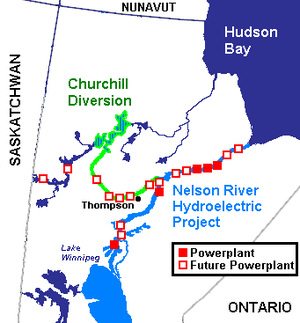
Affects on wildlife habitat and communities along the river to the north have never been adequately measured so affects on fish and the beluga whale population are relatively unknown. In Churchill, a weir and marina was constructed as part of the mitigation process by Manitoba Hydro. Although the observation tower the marina gives a nice view of the inlet off the river, the marina gets minimal usage. The weir allows the regulation of water levels south of that point for fishing and boating excursions. The beluga whale population ventures shorter distances up-river in summertime due to the tidal flow and shallow water. This might have had some affects on the population or it may have caused some whales to change habitat location and venture to other estuaries with warm rivers flowing into them. When belugas give birth and nurture their young they have an easier time with the moderate temperature warm waters flowing from the south.

Observation tower at the Churchill marina. Steve Selden photo.
I can’t imagine what the flow of the Churchill River would be like at 85% more pressure. Guiding over a decade of Churchill Arctic summer seasons I have experienced just about every type of conditions on the river and in the Hudson Bay. Although higher water flow would not have a profound affect within the main part of the river, the mouth and inlets would be very different at tidal changes. It’s very tricky at times to maneuver through the mouth of the river due to the currents and topography below. With more flow this could be easier or harder but would most likely have a bearing on fish and whales. Inlets and calving/ nurseries would be larger and deeper farther up-river…that is a surety.
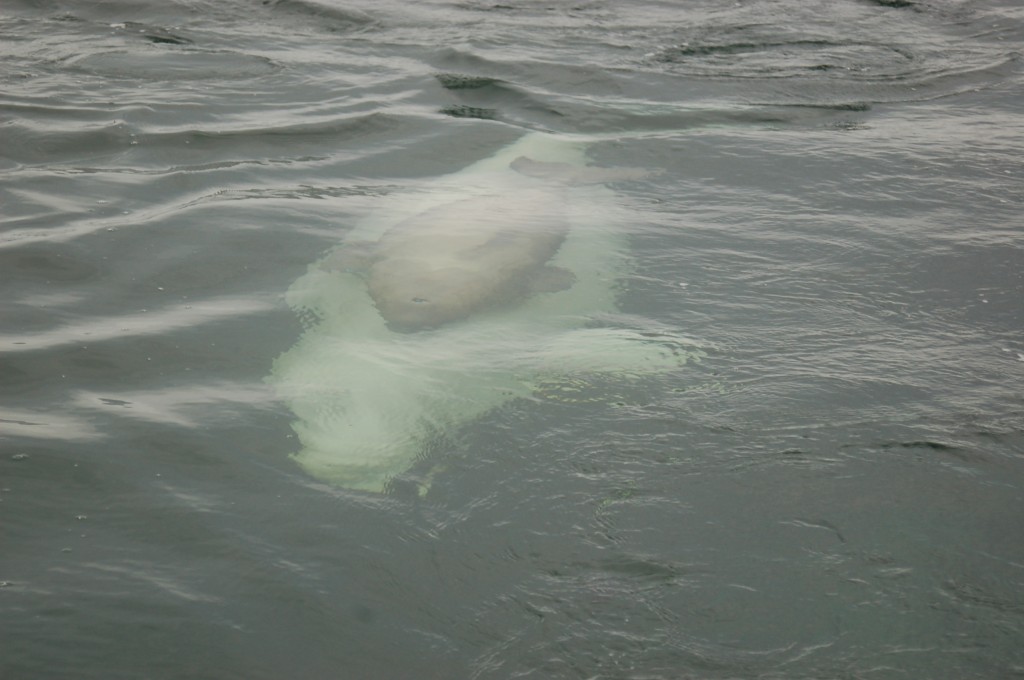
A baby calf beluga swimming in his mother’s slipstream to stay close. Steve Selden photo.
The affects on southern communities associated with the diversion have been quite harmful in many instances. South Indian Lake was forced to relocate and has since lost most of their original one million pound whitefish production…down to 100,000 pounds at last count.In the end, the benefits of the diversion and Nelson River power plants output have not been without issues. Having to ship the power to far southern communities has taken more resources and money than originally planned. The original water levels negotiated by Manitoba hydro have been disregarded and a push to adopt the newer levels by law is underway. One has to wonder, as with all these massive projects that alter our natural environment, are the benefits worth the effects felt by our wildlife populations?
by Steve Selden | May 26, 2015 | Churchill News
The Metis Heritage Hall in Churchill burned to the ground early this morning. All was lost in the fire including a vast collection of art and historical artifacts. The loss is truly devastating. Mrtyle de Meulles had stored her large collection of Metis artifacts used in her cultural talks and presentations. Unfortunately many of these items are irreplaceable. Our thoughts and prayers are with the people of Churchill and their terrible loss.

Fire response at Metis hall in Churchill. Rhonda Reid photo.

Fire destruction of Metis Hall in Churchill. Rhonda Reid photo.

Myrtle de Meulles in metis Hall. Metis Heritage photo.
by Steve Selden | May 20, 2015 | Churchill News
When I was guiding Churchill Arctic Summer trips for Natural Habitat Adventures with local birding expert Bonnie Chartier, one common goal we always strived for was spotting the elusive and rare Ross’s gull.
The bird, named after the famed Arctic explorer James Clark Ross, has a signature black – necklaced stripe around its’ neck and would randomly appear out of the mist on the Churchill River along the flats to the east of the grain port. This was a nesting ground confirmed by researchers since around 1980. In fact I cannot remember ever seeing the prized bird anywhere else in Churchill. Northern Siberia still exists as the gull’s predominant breeding grounds with seasonal homesteading along the Arctic Ocean’s ice pack.

Ross’s gull along the gravelly shore. Brian Small photo.
Bonnie Chartier is world renowned for being an expert on the birds of the Churchill region and has a published guidebook (out of print at present) called A Birders Guide to Churchill. We would bring the entire group down to the Churchill River banks by the port and have all looking through binoculars, scanning the water and gravelly flats for smaller gulls with that distinct black stripe around the neck. Another distinguishing mark we always looked for was a rosy – washed colored underbelly.

Ross’s gull in flight. Bruce Mactavish photo.
A funny occurrence at the outset of a trip happened just along the stretch of road near the port and flats. Our group of 10 or so was searching the shallows and distant Churchill River for the gull when a independent couple just next to us had a set up a tripod with a spotting scope. They had in their possession a copy of Bonnie’s book and were in dire need of finding this prized bird for their “lifelist”. They began asking Bonnie if she knew anything about the bird and it’s whereabouts in Churchill when she subtly revealed whom she was and that the book they had was written by her. Needless to say we all had a good laugh and although no Ross’ gulls were spotted that day, the couple left with a signed copy and we all departed with a funny memory and story.
by Steve Selden | May 15, 2015 | Churchill News
If you take an adventure to Churchill in the near future there are some “must see” attractions you should take in before you leave the frontier town. Of course some are season specific while some are year round accessible.
1.- Polar Bears: Not many people are unaware that Churchill is the polar bear mecca for viewing the “king of the Arctic”. During October and November the town is filled with high numbers of travelers hoping to see these amazing creatures in the wild. Of course summer also holds the potential for sighting fewer numbers of polar bears but still the chance exists. If you come during the winter to perhaps view northern lights, you will not see any as they are hunting seals on the Hudson bay ice. So plan a trip during the optimal window and come see the polar bears of Churchill!
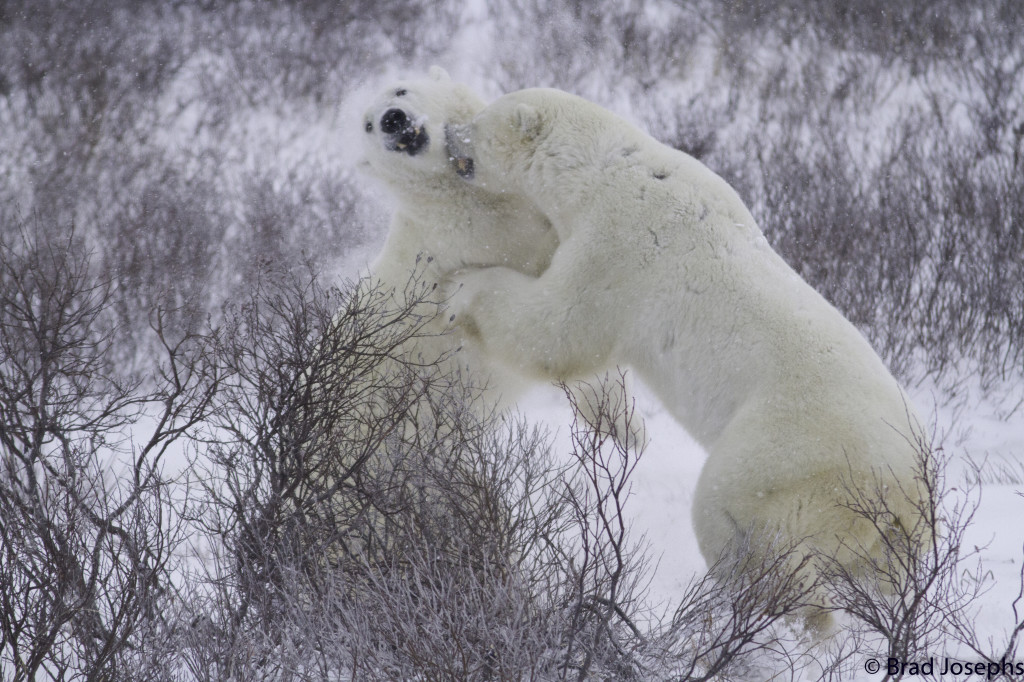
Polar bears sparring in the Churchill wildlife management Area. Natural Habitat Adventures photo.
2. Precambrian Shield: When in Churchill you will notice the rocky coastline and glacial polished rocks jutting out of the tundra in different areas of the surrounding area. You really will need to get out on the Precambrian shield and feel the energy that emanates from the heavy stone embedded in the Earth. The geological features are wondrous and magnificent and are some of the oldest rocks on the planet. You can easily become immersed in the natural history of the formations and see how the landscape adapts to their shape and movement.
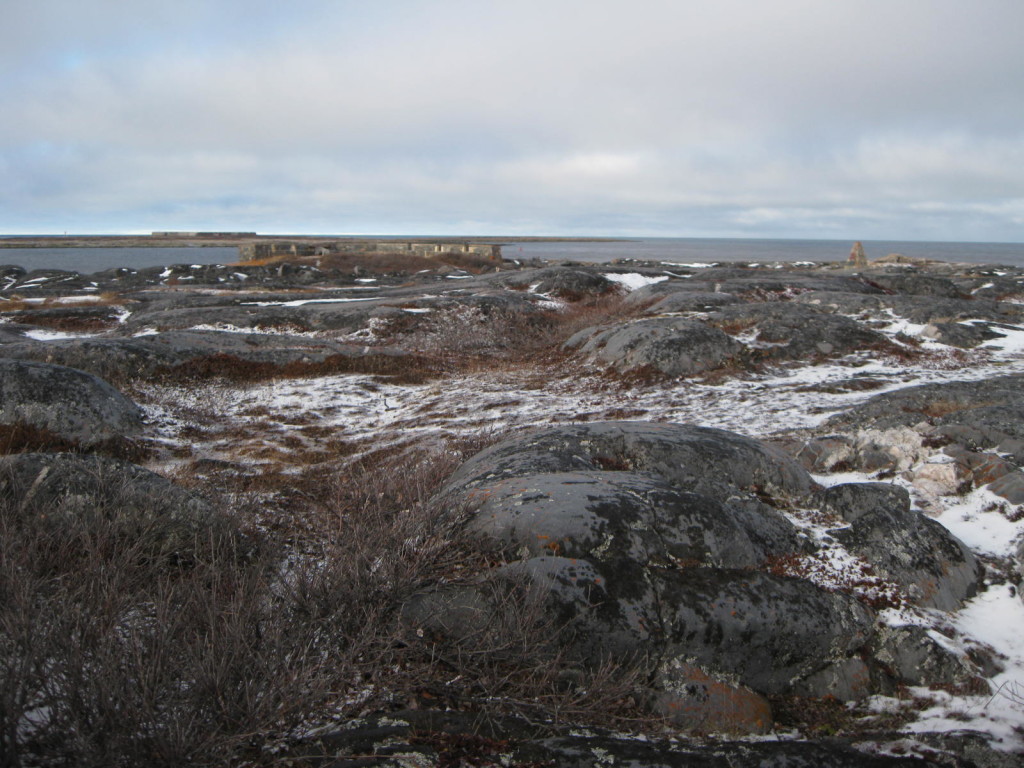
A view across the Cape Merry barrens past the battery and to Fort prince of Wales. Natural Habitat Adventures photo.
3. Churchill Northern Studies Center and surrounding area: At the far reaches of the main road out of Churchill heading east lies the old Fort Churchill Rocket Range. These grounds are now occupied by the new and improved Churchill Northern Studies Center. The center is a bastion for Arctic researchers and travelers to live and learn from the incredible diversity of the ecosystems colliding in one place. A tour of the facility and exploring the lakes and patterned ground in the area via trails is a must for getting a feel for the true sub-Arctic biome.

Churchill Northern Studies Center. CNSC photo.
4. Northern Lights: Another fairly obvious “must see” in Churchill. Located under Van Allens belt in the magnetic field of our atmosphere, Churchill is an optimal location to take in these mystical and scintillating lights. Natural Habitat Adventures has a new option to view the aurora; an Aurora Pod. With other various viewing options available as well, this is an absolute must see in Churchill.
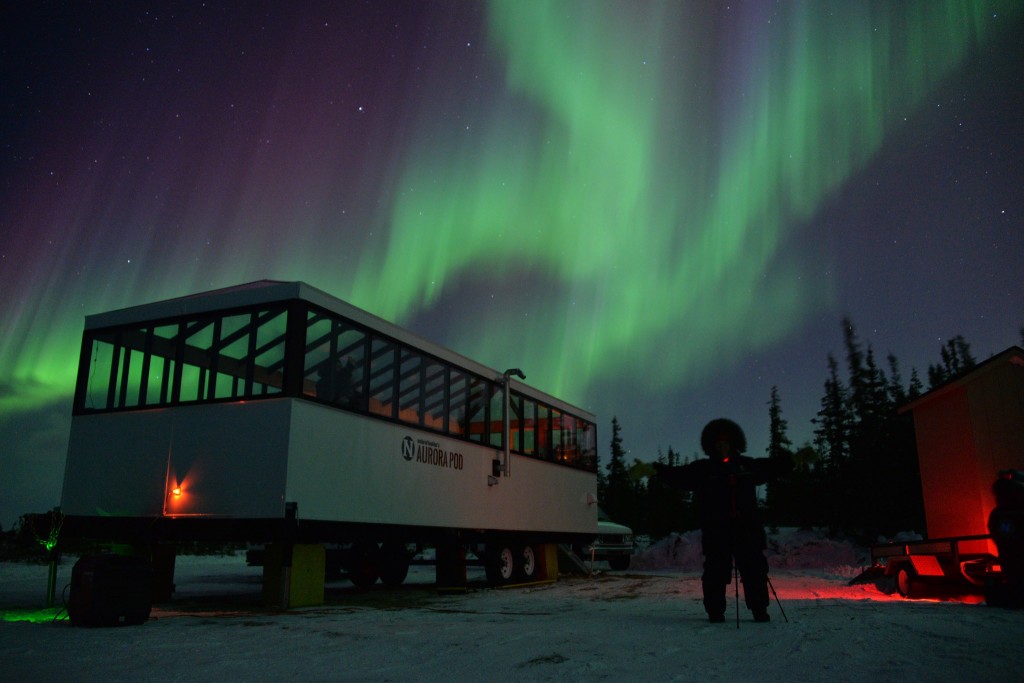
Natural Habitat’s Aurora Pod and an avid photographer. Alex de Vries – Magnifico photo.
5. -Cape Merry: This is probably the most beautiful and peaceful spot around Churchill. When guiding Churchill Arctic summer groups I would always bring the group there first as a relaxing orientation to the region. We would spend hours looking for flowers and studying the geology of the area. Fort Prince of Wales is just across the Churchill River (often teeming with beluga whales in summer) and the vast expanse of the Hudson Bay unveils itself as far as the eye can see.
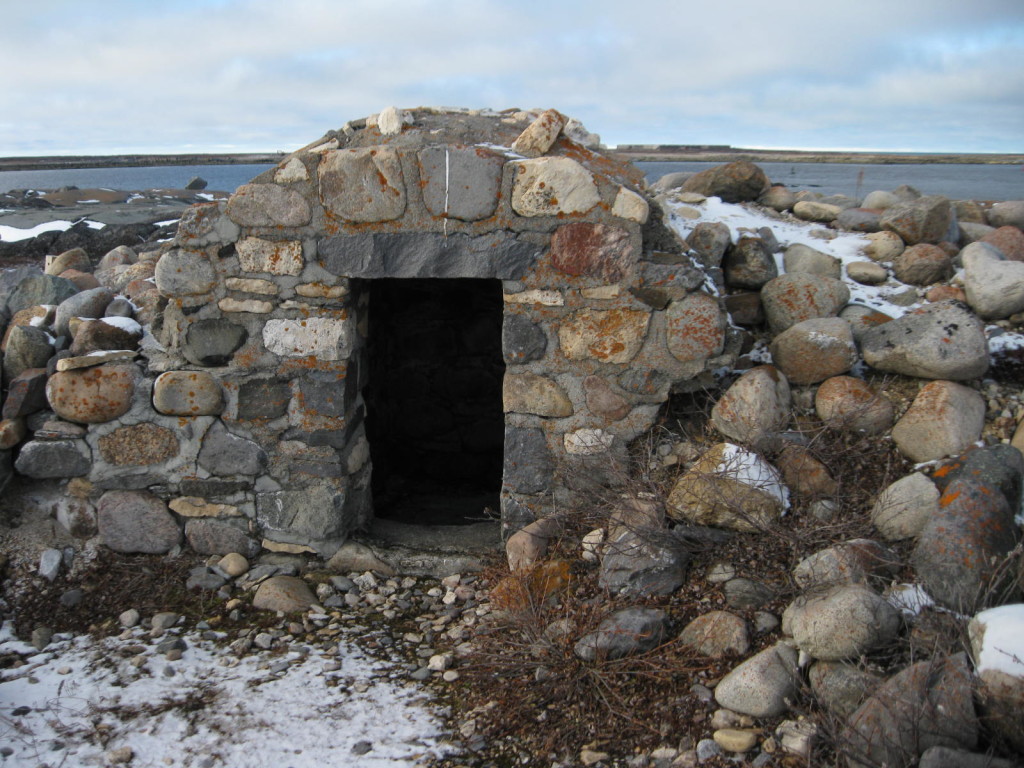
Ammunition cache at Cape Merry for cannon protection of Fort prince of Wales. Karen Walker photo.



















